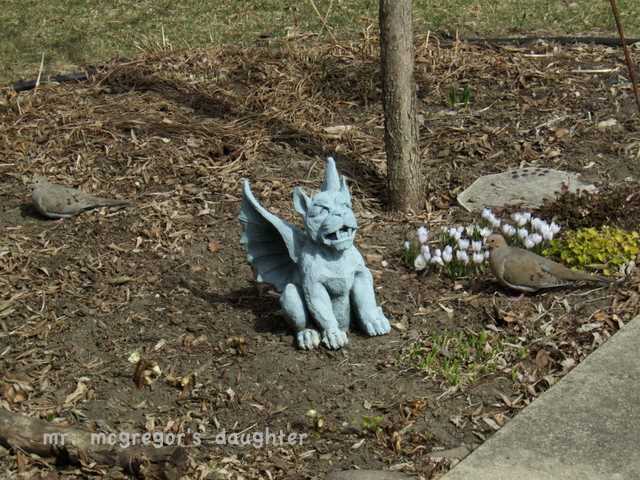
I admit, I do get miffed at the squirrels and their mischief in my garden. I named it "Squirrelhaven" as an ironic tribute to them. But I'm not completely anti-squirrel (unlike my feelings about deer and rabbits). Squirrels provide much entertainment with their playful antics and acrobatics.

I don't mind them eating the Crabapples, as long as they don't clip off branches to get at them, and I'm pleased when I see them munching on Boxelder seeds. The other day, there were six squirrels in the garden at once.Squirrelhaven is also a haven to other forms of wildlife. I don't use any pesticides, so there are plenty of bees, butterflies,

moths, spiders and other insects.

Squirrelhaven has many native plants that support wildlife, such as Milkweeds, Liatris, Mayapples, Sanguinaria and Violets (which are the larval food of Frillary Butterflies). There is something for the bees from February through November.

Conifers provide shelter, Coneflowers and Asters provide food in the winter, and the dead plant material left standing all winter provides nesting material for the birds, such as these Mourning Doves.

There are also other critters that call Squirrelhaven home, such as the ever elusive chipmunk (sorry about the graininess of the photo, but I couldn't get close),

the occasional frog, and the toads, which always startle me.

I nearly stepped on this one. At night I hear the footfalls of a raccoon on the roof. In the suburbs, humans have pushed animals out of nearly all their habitats, forcing them to make homes in our yards and gardens. We have an obligation to try to provide the most hospitable environment possible, and to try to co-exist with them as best we can.This post is part of Gardening Gone Wild's Garden Bloggers' Design Workshop.